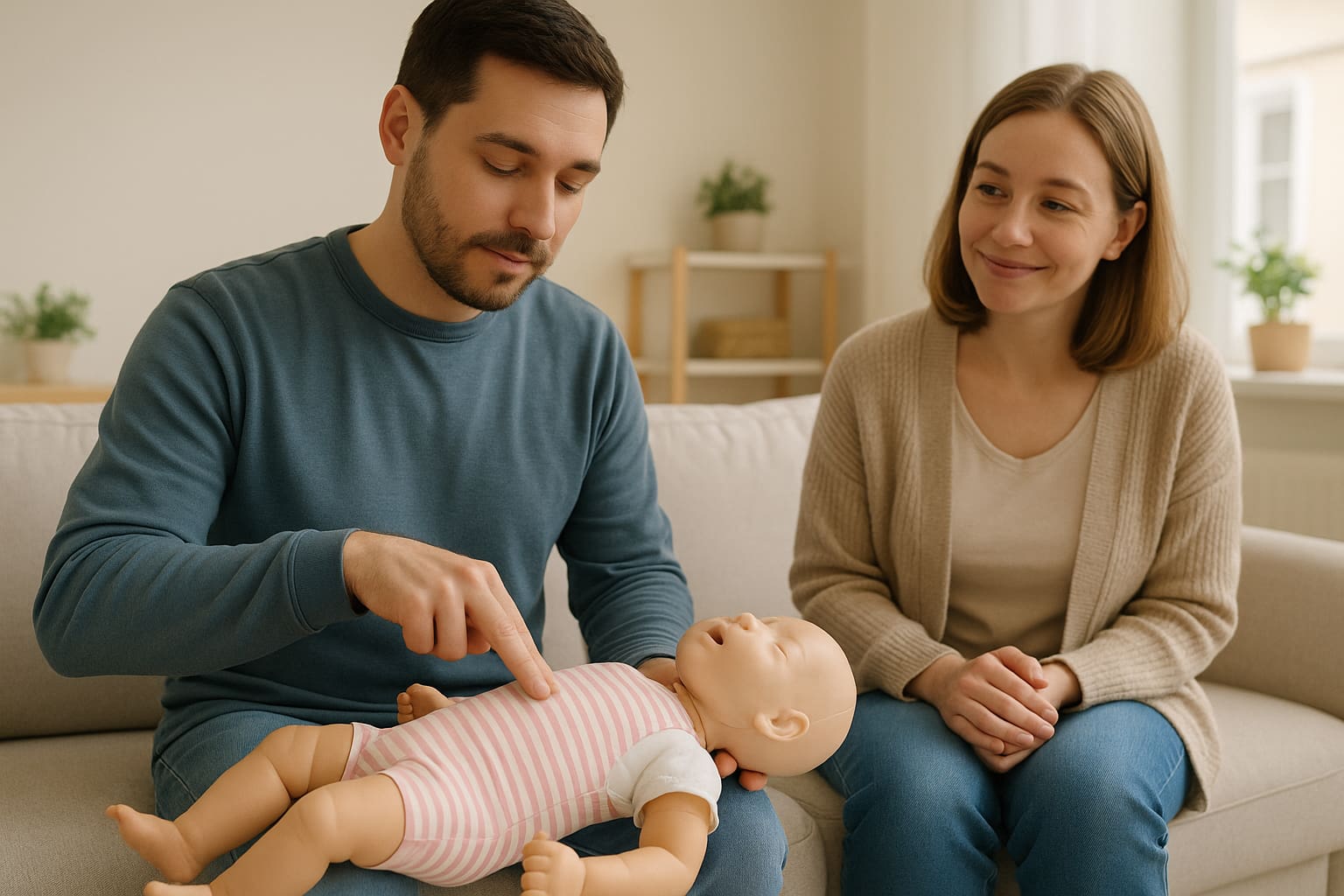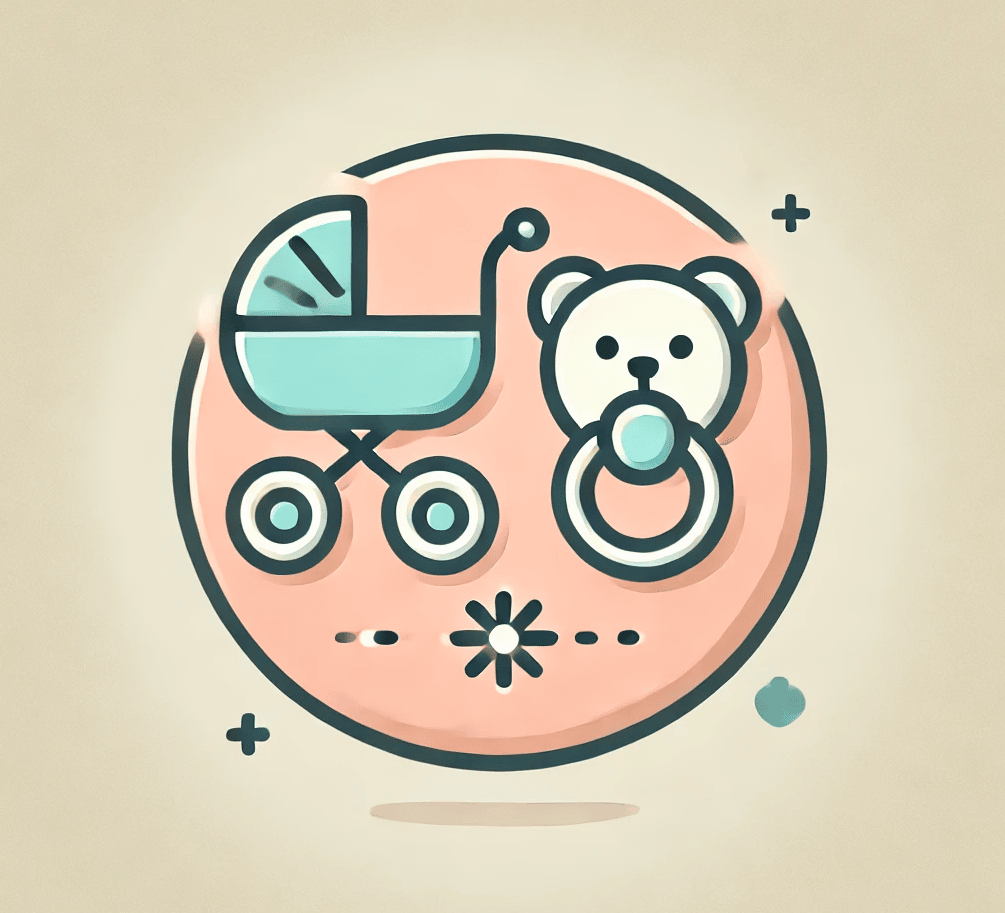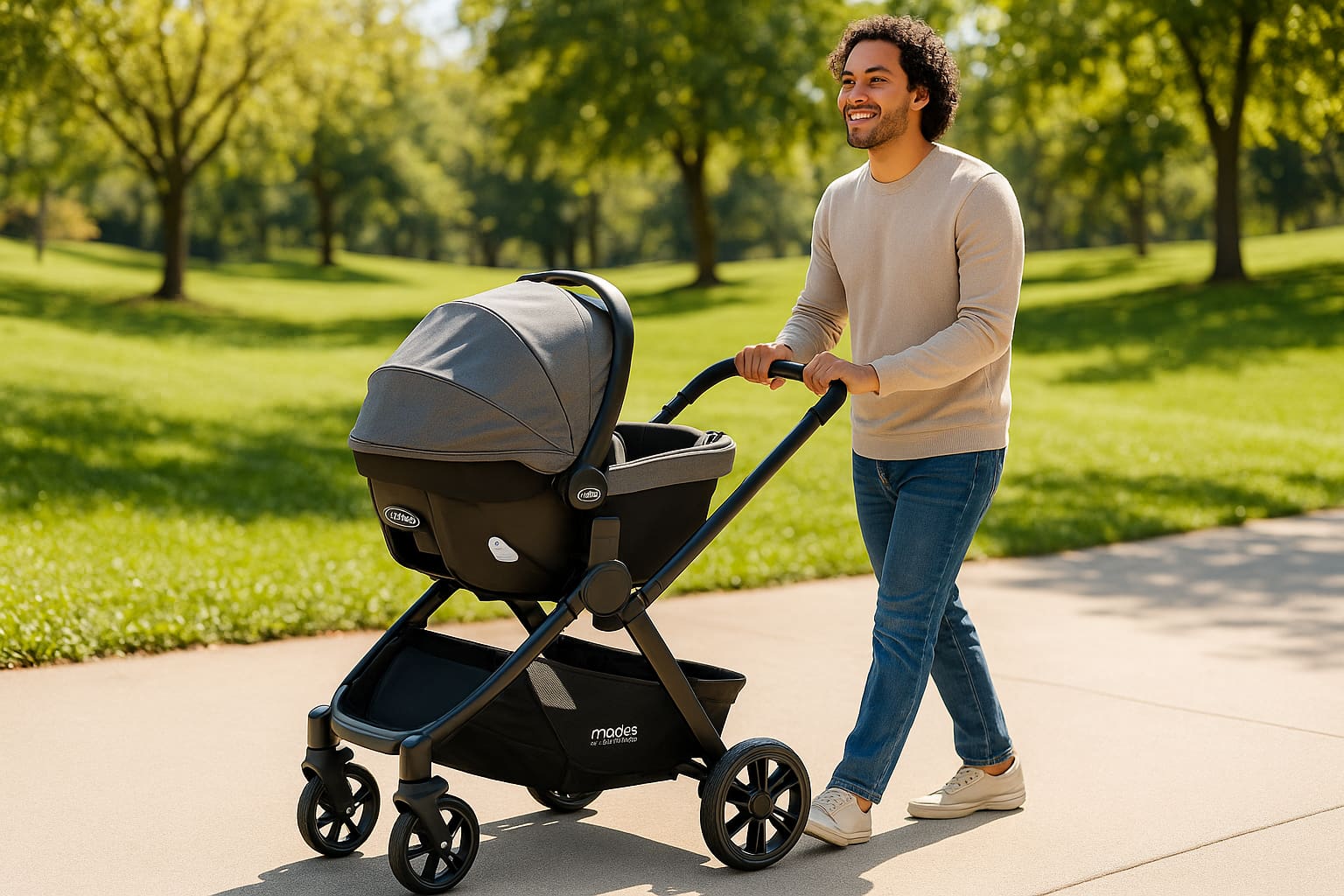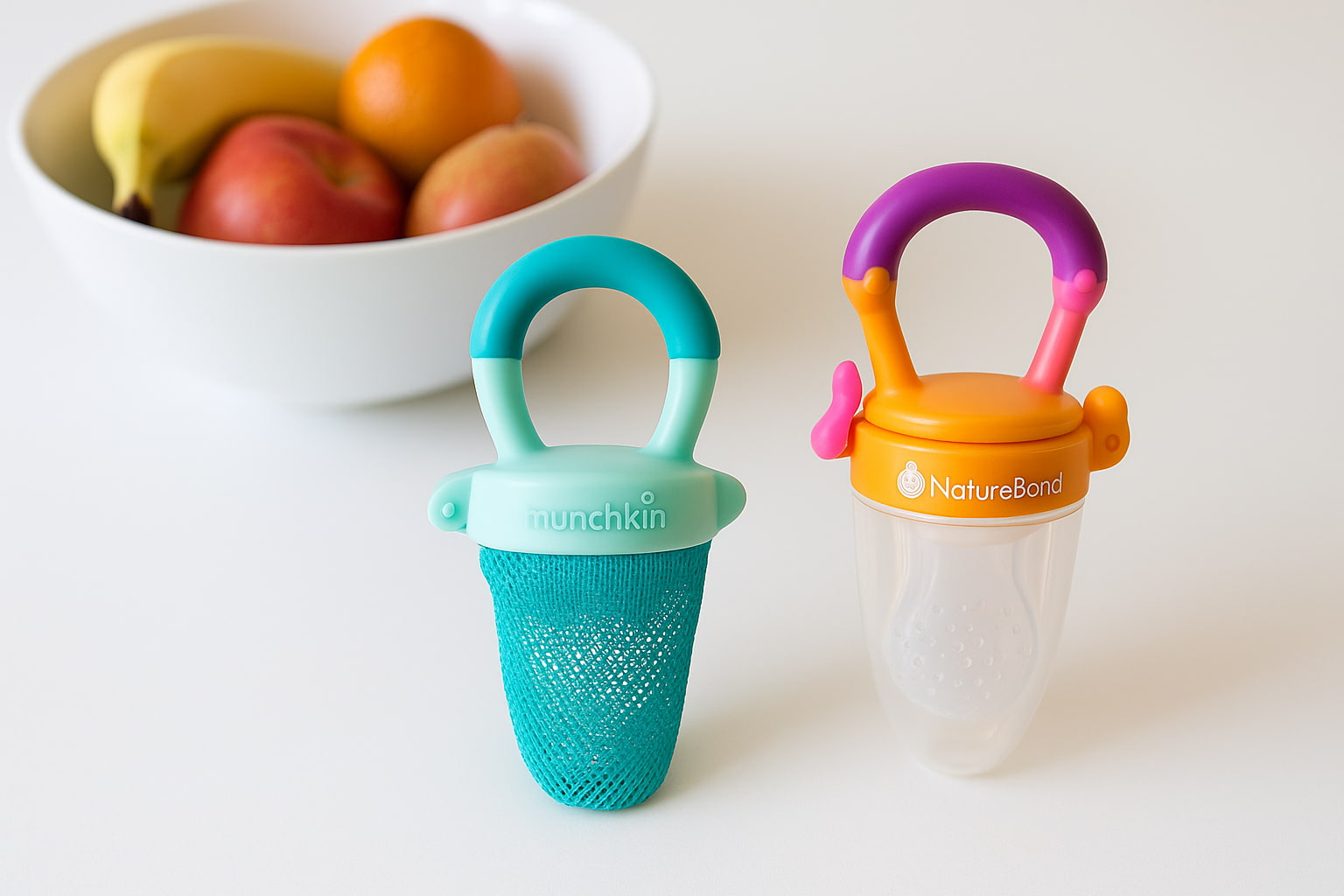When a baby starts to choke, every second feels like a lifetime.
Your heart races, your hands shake, and in that moment, it can be hard to think clearly.
That’s why knowing baby CPR for choking before an emergency happens is one of the most valuable skills you can learn.
The aim of this guide is to help you feel ready, not scared.
We understand how overwhelming it is to imagine your little one in danger.
But with simple, clear steps, you can act quickly and give your baby the best chance to breathe again.
You don’t need medical training or special equipment.
You only need calm guidance and the right actions at the right time.
In the sections ahead, you’ll find exactly what to do step by step so you can stay confident when it matters most.
1️⃣. Why Learning Baby CPR for Choking Could Save Your Child’s Life
Each and every parent hopes they would never have to deal with a choking emergency. But babies explore the world with their mouths, and it only takes a moment for food, toys, or small objects to block their airway.
When that happens, there’s no time to look up instructions or wait for help. Baby CPR for choking gives you the ability to act quickly and confidently when every second matters. It’s not about being a medical professional, it’s about being prepared to protect your little one.
Here’s why it’s essential to learn baby CPR:
✔️ Immediate action saves lives: You can help before emergency services arrive.
✔️ Replaces panic with calm steps: You’ll know exactly what to do.
✔️ Builds daily confidence: Parents feel more at ease knowing they’re ready.
✔️ Simple skills, big impact: A few hours of learning can prevent tragedy.
This knowledge doesn’t just prepare you for emergencies, it gives you peace of mind every day.
2.👶 Recognizing the Signs of Infant Choking
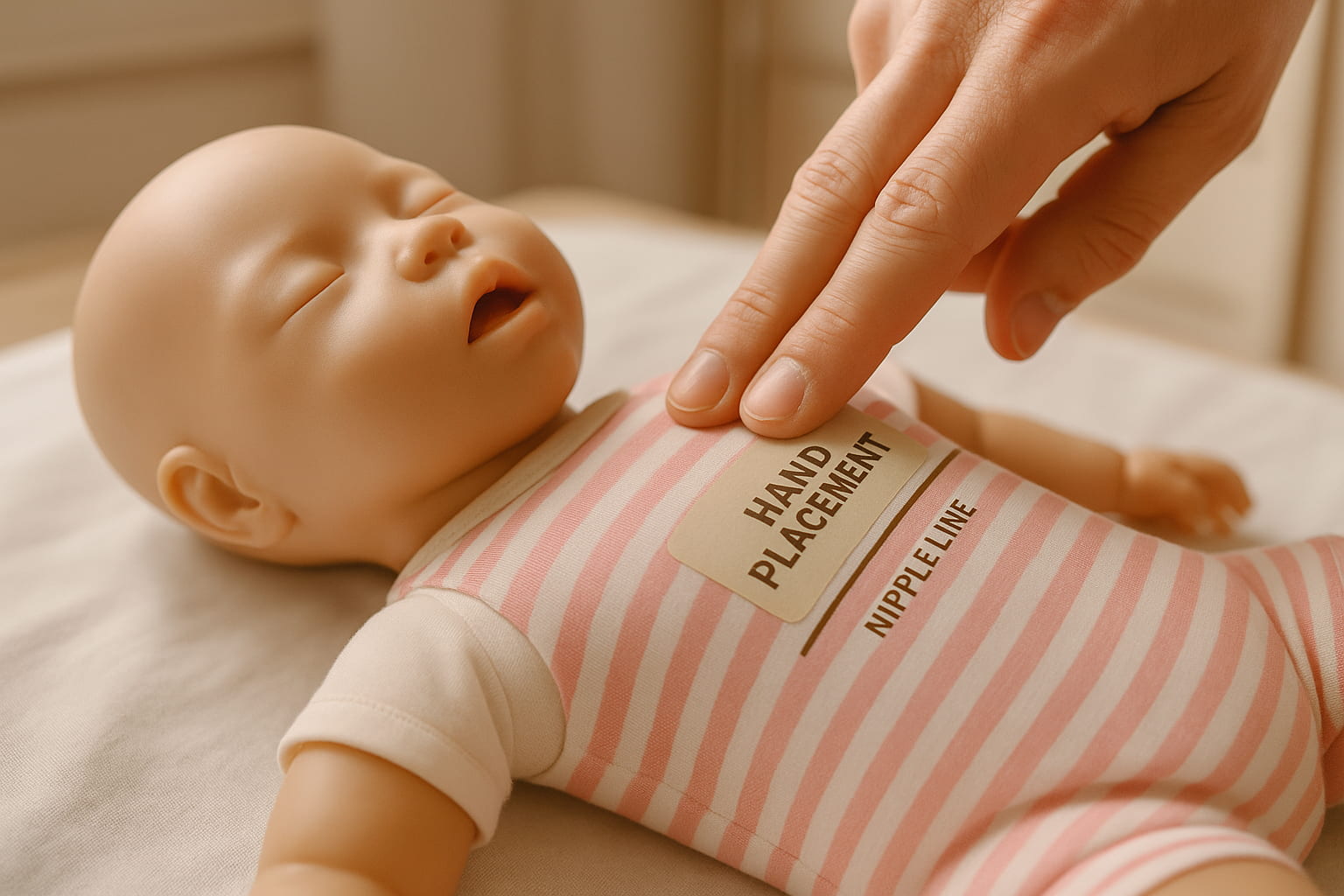
Babies explore the world with their mouths, but they can’t tell you when something is wrong.
That’s why it’s so important to learn the warning signs of choking early on.
Recognizing these signs quickly gives you precious seconds to step in. Those seconds can help before the situation becomes life‑threatening.
Watch carefully during feeding or playtime, and look out for these key signs:
✔️ Sudden silence or inability to cry
✔️ Weak coughing or gagging without clearing the airway
✔️ Bluish lips or skin tone
✔️ High‑pitched noises while trying to breathe
If you observe any of these symptoms, act immediately. Your quick response can stop a frightening situation from becoming a true emergency.
Worried about other choking hazards at home? Explore our guide on Common Household Items That Can Choke a Baby for a deeper look.
3.⚡ Immediate Steps to Take Before Starting CPR
When you notice your baby might be choking, every move counts.
Before beginning full CPR, there are a few quick actions that can clear the airway and sometimes solve the problem right away.
Taking these steps first gives your baby the best chance to start breathing again. They may not even need full chest compressions or rescue breaths.
✔️ Stay calm. Your baby can sense your energy, and staying steady helps you think clearly.
✔️ Check the mouth. Use your finger to gently sweep out anything you can see.
✔️ Assess breathing. Look for chest movement and listen carefully for air sounds.
✔️ Give 5 back blows. If a blockage of the airway stays, switch to chest thrusts.
After these steps, if your baby is still not breathing, move quickly into CPR. Your calm, fast actions can make all the difference.
4.📏 How to Position Your Baby for Effective CPR
Before you begin chest compressions or rescue breaths, making sure your baby is positioned correctly is crucial.
A proper position keeps the airway open and allows each compression and breath to work as intended.
It also prevents accidental strain on your baby’s fragile neck and body while you provide help.
Here’s how to get your baby into the safest position for CPR:
✔️ Place your infant on a firm surface, face up.
✔️ To clear their airway, keep their head gently cocked back.
✔️ Use your hand to support the head and neck.
✔️ Verify if the body is stable and upright.
Once your baby is positioned this way, you can begin CPR confidently, knowing that each step you take is as effective as possible.
5.💓 Performing Chest Compressions Safely on Infants

When a baby isn’t breathing, chest compressions help push oxygen through the body until normal breathing is restored or help arrives.
Doing this correctly is important because a baby’s chest is very delicate, yet it still needs enough pressure to keep blood and oxygen flowing.
With calm, careful technique, you can give your little one the best chance to recover.
Follow these steps for safe and effective compressions:
✔️ Use two fingers placed just below the nipple line.
✔️ Press down about 1.5 inches deep.
✔️ At around 100 to 120 compressions per minute, maintain a steady rhythm.
✔️ In between compressions, allow the chest to fully rise.
Stay focused and steady as you work.
These gentle but firm actions can keep your baby’s heart and lungs supported until professional help arrives.
Want safer feeding tools for your baby? Check out Best Baby Spoons Compared for Choking Prevention to prevent hazards during meals.
6.🌬️ Delivering Rescue Breaths Correctly
When your baby’s chest isn’t moving and there’s no sign of normal breathing, rescue breaths are the next critical step.
These breaths give your baby the oxygen they desperately need while you continue lifesaving care.
It’s important to stay gentle and follow each step carefully, because a baby’s lungs are tiny and can only handle a small amount of air at a time.
Here’s how to give rescue breaths the right way:
✔️ Cover your baby’s mouth and nose with your mouth to form a seal.
✔️ Give gentle puffs, using the strength of your cheeks instead of a full breath.
✔️ Watch for the chest to rise with each breath.
✔️ Alternate two breaths after every 30 compressions.
Keep your focus and stay calm.
These careful breaths can make all the difference until your baby starts breathing on their own or help arrives.
7.🚫 What NOT to Do During a Choking Emergency
In an emergency, it’s easy to panic and try anything that comes to mind.
But certain actions can actually make choking worse or cause additional injuries.
Knowing what to avoid is just as important as learning the right steps.
By steering clear of these common mistakes, you can focus your energy on what truly helps your baby.
Here are key things you should never do when your baby is choking:
✔️ Don’t shake your baby — sudden movements can cause further harm.
✔️ Don’t hold your baby upside down — gravity alone won’t clear the airway.
✔️ Don’t perform blind finger sweeps — you might push the object deeper.
✔️ Don’t delay action — start the recommended steps right away.
✔️ Don’t stop too soon — continue efforts until breathing returns or help arrives.
Staying calm and avoiding these mistakes gives your baby the safest chance to recover quickly.
💡 Quick Fact
According to the American Red Cross, choking is the leading cause of injury and death in infants. Learning CPR techniques can reduce this risk dramatically. Learn more in their official guide on Infant Choking Rescue Steps.
8.☎️ When to Call Emergency Services
Even when you do everything right, some situations need professional help immediately.
Calling for emergency services at the right time can be the step that saves your baby’s life.
It’s important to stay calm and act quickly so you can keep helping your baby while trained responders are on their way.
Call 911 or your local emergency number right away if:
✔️ Your baby becomes unconscious.
✔️ You’ve performed CPR cycles, and there’s no improvement.
✔️ Breathing is weak or irregular after clearing the airway.
Keep your phone nearby while giving care.
Stay on the line, because the operator can guide you through CPR and give updates until help arrives.
Your quick call and continued effort can make all the difference in a critical moment.
Absolutely! Here’s the rewritten and expanded version of that section. It includes context before and after the bullet points and is around 120–130 words while keeping the bullets intact.
9. 📚 Practicing Baby CPR: Training Resources You Can Trust
The best time to learn how to save a baby’s life is long before an emergency happens.
Practicing baby CPR for choking in a calm setting builds muscle memory and confidence, so when every second counts, you already know what to do.
There are many trusted resources that teach these skills in a way parents can easily understand and follow.
Here are some of the best training options to consider:
✔️ Look for certified classes by the Red Cross or AHA.
✔️ Many hospitals offer free parent workshops.
✔️ Online courses with practice dummies are also available.
Spending just a little time learning now means you’ll be prepared later.
These trusted programs can give you hands‑on skills and the peace of mind every caregiver needs.
Looking to make your kitchen safer? See our tips in How to Baby‑Proof Your Kitchen for Choking Risks and add layers of prevention.
10.🏠 Essential Babyproofing Tips to Prevent Choking
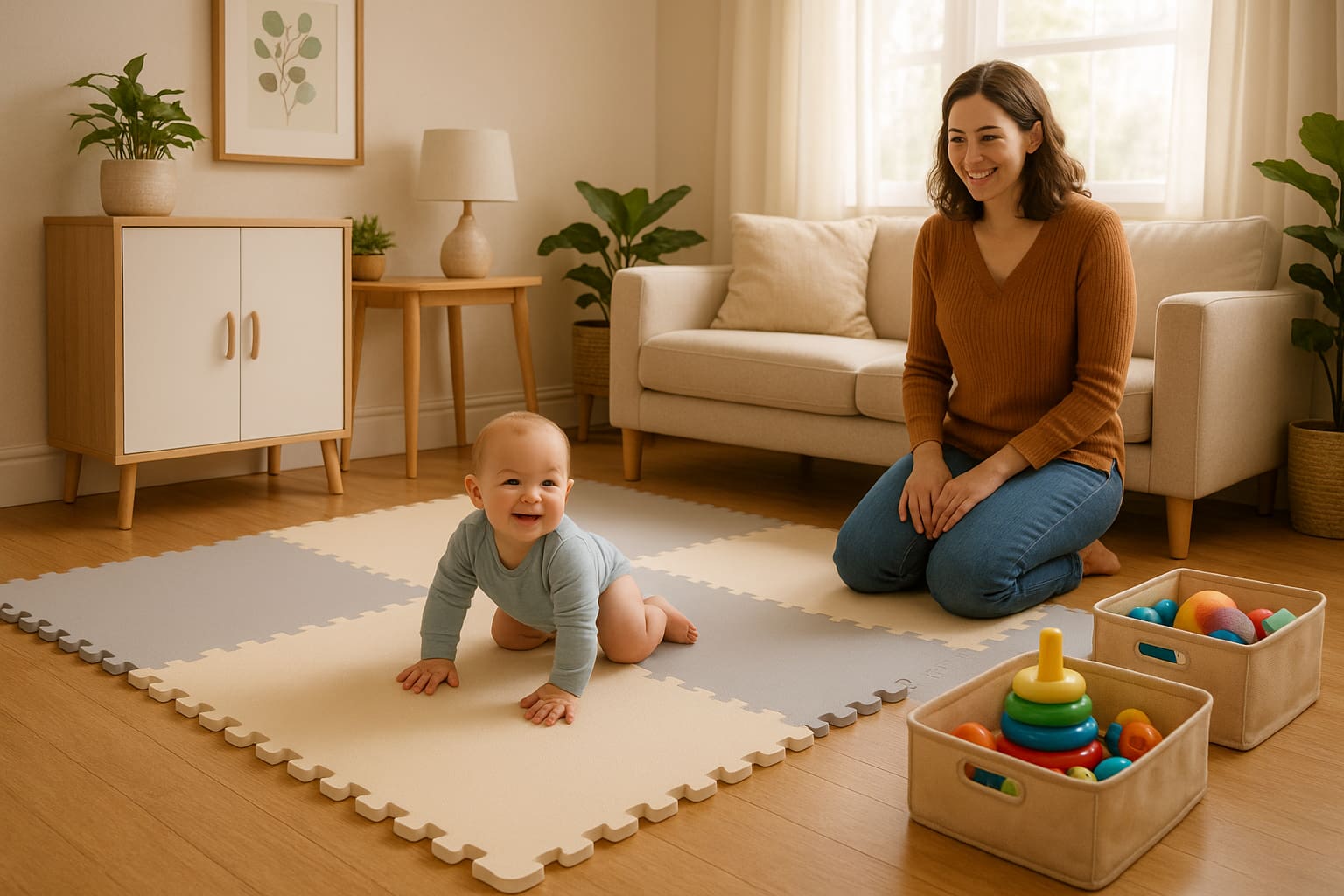
The best way to handle choking emergencies is to stop them before they happen.
Babyproofing your home plays a huge role in keeping little hands and curious mouths safe from danger.
It only takes a few minutes to scan your baby’s environment, but these small changes can prevent accidents and give you peace of mind every day.
Here are simple yet powerful babyproofing tips to reduce choking risks:
✔️ Keep small objects out of reach.
✔️ Inspect toys for loose parts.
✔️ Use safety locks on drawers and cabinets.
✔️ Avoid foods like whole grapes or hard candies.
By staying alert and making these adjustments, you create a safer space for your baby. They can explore, play, and grow without unnecessary risks.
Curious about safe feeding accessories? Don’t miss Top 7 Sippy Cups Designed to Reduce Choking for extra peace of mind.
11. ✅ Final Verdict & Encouragement for Parents
It’s scary to think about emergencies, but knowing baby CPR gives you real control when every second counts. You don’t have to be a medical expert or have special tools; these simple steps are skills every parent can learn and use.
The biggest thing to remember is that CPR isn’t complicated. It’s a clear process you can follow even when you feel nervous. With practice, these actions become second nature.
Learning this not only prepares you to help in a crisis, it also brings a deep sense of peace. You’ll feel more confident in everyday moments, knowing you’re ready to protect your baby if the unexpected happens.
By reading and learning these tips, you’ve already taken a powerful step. You’re showing love, care, and a commitment to keeping your little one safe, and that makes you an amazing parent.
Disclaimer:
This article is for informational purposes only and is not a substitute for professional medical advice.
✍️ Written by Find For Baby
At Find For Baby, we’re passionate about helping parents and caregivers make informed choices for a safer, happier home. Our team carefully researches and shares trusted guidance on baby gear, home safety, and family‑friendly products so you can feel confident in every decision you make.
